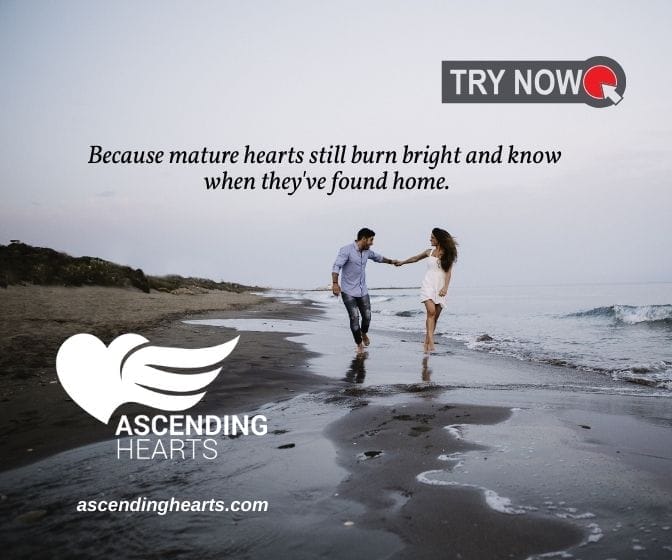Andrew Holecek: The Wisdom Of Tibetan Yogas

Andrew Holecek is an author and spiritual teacher who offers talks, online courses, and workshops in the United States and abroad. As a long-time student of Buddhism, he frequently presents this tradition from a contemporary perspective – blending the ancient wisdom of the East with modern knowledge from the West. Drawing on years of intensive study and practice, he teaches about the opportunities that exist in obstacles, helping people with hardship and pain, death and dying, and problems in meditation. Known as an expert on lucid dreaming and the Tibetan yoga of sleep and dream, he is an experienced guide for students drawn to these powerful nocturnal practices.
An Interview with Andrew Holecek: The Wisdom Of Tibetan Yoga
By Sandie Sedgbeer
To listen to the full interview of Andrew Holececk by Sandie Sedgbeer on OMTimes’ flagship radio show, What Is Going OM, click one of the players below.
Why do people meditate? According to the author, speaker, and humanitarian Andrew Holecek, the primary reason is that it reduces anxiety, improves sleep, declutters the mind, and helps people feel better. But Andrew asks, where does your meditation go when things go bad? Where is your spirituality when rock meets bone, as they say in Tibet, or when the crap hits the fan? Andrew Holecek has studied sleep, yoga, bardo yoga, and other traditional practices with living masters in India and Nepal.
Andrew Holecek offers seminars internationally on meditation, lucid dreaming, and the art of Dying. His work has appeared in numerous periodicals, and his acclaimed books include Dreams of Light, the Profound Daytime Practice of Lucid Dreaming, Dream Yoga, the Tibetan Path of Awakening through lucid dreaming and Reverse Meditation – How to Use Your Pain and Most Difficult Emotions as the Doorway to Inner Freedom in which he advocates that when things get hard, it’s time to turn your practice on its head and put your meditation into reverse. What does that mean, and how can it help you step up for your evolution?
Sandie Sedgbeer: So, turn your practice on its head. I can imagine that the first response you get to those words of advice is often complete confusion. So, how can reversing our meditations help us?
Andrew Holecek: Well, oh my gosh, in so many ways. I mean, meditation, first of all, meditation is a kind of a catchall term, right? Multivalent term. It is a little bit like sports. So when people talk about meditation these days, it says it is like sports. Well, I mean, there’s like hundreds of jokes. Perhaps unknowingly, people usually think of meditation as fundamental mindfulness, which is fantastic. Mindfulness is an incredibly powerful practice. But one of the things I’m working on these days, Sandy, is that as wonderful as mindfulness is, and it truly is, the legitimacy of the mindfulness revolution is amazing. Its powerful mindfulness sedates. It doesn’t liberate.
And so there’s so much more beyond mindfulness practices that transcend, but include mindfulness and the reverse meditations are in that family, and boy, can we run with that. It’s an amazing little known practice set of practices, which I’m hoping to make more well known, where what we do is we reverse our relationship, we reverse our attitudes, especially to unwanted experiences, because usually when people think about meditation, they think about getting Zen or chilling out. And so there’s so much more beyond mindfulness practices that transcend, but include mindfulness and the reverse meditations are in that family, and boy, can we run with that. It’s an amazing little-known practice set of practices, which I’m hoping to make more well known, where what we do is we reverse our relationship, we reverse our attitudes, especially to unwanted experiences, because usually when people think about meditation, they think about getting Zen or chilling out.
And when the world’s on fire chilling out, it’s a good thing. But, like you mentioned in the opening comments, where do you go when the crap does hit the fan? My experiences with standard practices like mindfulness are fantastic, but meditation tends to go out the window when things get really intense. And so these practices are designed, especially in this age when there’s so much divisiveness and contention- I just look at the world, right? I was inspired to bring these practices out of the slightly esoteric closet of the Tibetan Buddhist tradition.
My publishers agreed, saying, wow, this could be of some benefit to the world now. And I can get into specificities. Like, why is the call reverse? What do you do? How do you get into them? Because, well, once you get into them, I can tell you they’re a game changer from decades of doing these practices.
Sandie Sedgbeer: Meditation is very challenging for an awful lot of people. I’m one of them, the monkey mind, et cetera. But I think if I understand this correctly, you are asking me and many others, when the crap hits the fan, we have to stick with it. Yeah. And that is just awful. I mean, that’s like sitting on a pin, right?
Andrew Holecek: That’s the reverse, right? Yes. Like, you want me to do what? Really? You want me to do what? Yeah. So that’s one reason they’re called reverse because it’s like, wait a second. I thought meditation was like hanging out and restarting my mantra on top of the mountain with the wind blowing. Hey, that’s fine. I’m not dissing that at all. But what happens when it gets rainy and stormy, the hill’s coming down, and you’re getting spanked with things? And so that’s where the stuff really comes into play. That’s where it really kicks into gear. And, as I playfully say, but it’s so true, by putting your meditation into reverse, you can accelerate going forward. Because usually when we enter unwanted untoward difficult experiences, I’ve been speaking as a meditator for over 50 years and as a clinician. I’m a retired dental surgeon.
And so I have spent decades in the pain business writing tens of thousands of prescriptions and having people come in with really raging acute level 10 pain. I’ve also been involved in studies and neuroscience labs, in MRIs for entire weekends. Because of my seeming proficiency and meditation, they’re studying my brain and how I relate to pain. So, I want to say that I’m not just simply talking about this stuff from meditative or philosophical arm sharing. From a scientific and medical perspective, I’m discussing what it’s like in the trenches and weeds. And this is where I have some confidence with what I’m talking about because I’ve experienced it, personally on my own side, I’ve experienced it clinically, and I have some experience scientificallyAnd because I teach this stuff, especially over the last couple of years when I was writing this book, I’ve been working with people going through these practices.
And once you get past this little learning curve, what’s amazing about this particular set of practices. Maybe because of their intensity, they tend to incorporate more quickly than others, so it doesn’t take a lot of practice before you can start to perform. But again, so many different directions can take you with this because it’s such a rich topic.
Sandie Sedgbeer: Well, I would like to know about these practices, but before we do that, I want to talk about pain. We all suffered pain. Some people suffer more than others, and you say that when you get pain or stuff, you actually feel better. And You quote an incident of yours in the book reverse meditation, where you were on the floor in agony one night, and instead of going to the ER, you stayed with it and went through the pain to bliss. How do you convince someone to stick with it, to keep suffering, right? How do you do that?
Andrew Holecek: Yeah, this guy’s a nutcase, right? This is why there is definitely some preparatory work. Because otherwise, exactly like you’re saying, people are going to listen to this, and they’re going, are you like, you want me to do what? Are you kidding me? So, to get into these practices, they’re considered somewhat advanced for all your reasons. It’s the opposite of what I want to do. And so, um, I don’t want to be fast and presumptuous about what’s involved to gain some confidence proficiency here. Because it’s a little bit like studying calculus. Calculus is meaningless if you don’t have a background in arithmetic and algebra. So to really do this properly, the right view is in order, which is creating, and I do this rigorously about the overarching view.
Literally, it’s called the right view in Buddhism, where you establish this wonderful, legitimate view of sacred outlook, sacred world, that again, in itself is a reverse view. It’s a review that all the wisdom traditions radically proclaim that the world is not made of lifeless matter. The world is made of heart, mind, and spirit. It’s divine, it’s pure, and it’s basically good. So right off the bat, the right view is a reverse view. And so, what I do to substantiate, it’s like, what are the, what’s the maximum extraordinary claims require extraordinary evidence. So I draw on all the wisdom traditions. I draw on the kabbalistic tradition from Judaism. I draw on Christian mysticism, Islam, Hinduism, Buddhism, and all these vectors from all these amazing traditions. They’re radically proclaimed.
Yes, the nature of whatever arises is in Dzogchen, probably most archetypally represented, perfectly pure. And so that itself it’s two things: It’s a preparatory practice for the reverse meditations, and it’s also the fruition. In other words, the more you do it, strengthened by this view, and the more you start to realize, wow, if I go directly into what I would normally flee from, there’s something here. There’s some purity here. So that’s super important to understand. There has to be a right outlook, a right view, because otherwise, again, you’re just not going to do it. This is nuts. So, what happens is there are two preparatory practices before actually entering the reverse meditations formally.
First is mindfulness: establishing a platform, establishing the ground of quiescence. Because the first thing that happens when we hurt is we want out, we are just going to FedEx away from this pain.
And so the first thing we need to do is to develop some level of stasis stability, quiescence, where we can at least hold our seat. And then the second practice, that’s, that’s also critically important. And this is such a beautiful, powerful practice of open awareness. The ability for the mind and heart to open, to expand the narrative, is it transcends but includes mindfulness.
So it uses mindfulness as a platform. And with open awareness, you’re opening your heart and mind in a kind of incubator, a formal meditation practice session to establish a more radical acceptance of whatever rises in your experience. And then, with some proficiency, you don’t have to master it. Still, as the mind and heart open and you have a greater ability to say yes to what’s arising, t We voluntarily titrate.
In other words, you can do it, manage the degree like you bite your lip or dig your fingernail into your thumb, and then you go through the four stages. And we can go through all four of these. These are beautiful. And then, I could also go back and say a bit more about how I applied this. Not only some 20 years ago when I had my kidney stone experience lying on the floor, but Sandy, I was in the er, I was just, two days ago I was in emergency surgery because of acute sepsis about sepsis, about to go in a septic shock because of another kidney stone, severe raging pain. I mean, it was bad. And I can tell you how I, it, because I’ve been doing this for so long, I wasn’t freaked out once the entire time the doctors are going in there and they go, do you realize how sick you are?
I’ll pause for a second because we can take this into the four stages of reverse meditation. But there’s a classic adage in the tantric tradition, and these practices fit within the tantra rubric. And you could say in, in the West alchemy, where the practice in both its traditions is transformed, led into gold, in this case, pain, suffering, or poisoned into medicine. And so, they are tantra and spirit. And one thing that characterizes tantra, a wonderful maxim, is that the preliminaries are more important than the main practice.
And so that’s why there’s a grant, there’s an on-ramp. You have to do the preparations because otherwise, exactly on first look, when you’re reading this, or somebody else is hearing about it, they’re going like, this is nuts. Well, maybe a first glance, it’s nuts. But if you want to radically and profoundly alter your relationship to any wanted experience, this stuff is about nuts. This stuff has tremendous traction and applicability to whatever happens. So, we can; I can run in any of these particular directions.
Sandie Sedgbeer: So, we have to shift our perceptions first and foremost of all of this and get rid of decades, if not eons, of conditioning.
Andrew Holecek: Oh, totally. Yeah. And so, the biggest conditioning I talk about extensively in the book is the relationship of contraction to pain. Yes. Because contraction is what I invite anybody reading this, don’t take what I’m saying at face value. Check it out, kick the tires, and test it against your experience. Whenever you have unwanted experiences, especially, we can say, archetypally pain, we can say, arguably, that’s the most unwanted all experiences. Take a look at your experience. Every time I feel it, almost, almost instantaneously, what do I do? I contract. And I really like this notion of contraction because not only is it a description of the experience, it’s all highly effective. In other words, I can feel my contractions, right?
Sandie Sedgbeer: Well, let me ask you a question that shouldn’t be too difficult, and it does relate to what you’ve been saying about how few people are right now. Let’s talk about the Kali Yuga, or “the age of darkness,” “the age of vice and misery,” or “the age of quarrel and hypocrisy,” which you say is currently underway. The dark virus that’s infecting us. And this, I think, is what is creating so much anxiety for people that anything else is impossible.
Andrew Holecek: Yeah, absolutely. It’s a really good, good one. So Kali Yoga, the term comes from the Hindu tradition, but the Buddhists talk about it as Mappo. I mean, it’s been predicted by many world wisdom traditions forever. And this is my rendering of it. In my estimation, one thing that makes the Dark Ages so dark is its insidious onset. It’s an insidious manifestation and an insidious continuous practice. And by this, what I mean is I argue that the Kali Yuga, the Dark Age, started with the beginning of artificial light because artificial light allowed us for the first time to violate the natural curfew of the night, which invites this interiority. That’s where evolution takes place. To summarize, Teilhard de Chardin’s evolution hasn’t stopped.
It’s only moved indoors at the heart and mind levels. And so, with all our weapons of mass distraction, right? Our phones, computers, tablets, and screens screen us away from reality. I mean, look at what’s happening with TikTok and all these addictive tools, social media, and cyber skills and all that kind of stuff. Every time people reach for their phones and every time it’s getting worse and worse and faster and faster, look at the airports. We’re all like the proverbial frog in, in heated water. We’re boiling ourselves alive because it’s happening so fast. We don’t even know it. And so I argue that the colleague Yuga is principally brought about these days by what makes it so dark is its insidious instantiation.
People don’t notice things like global warming or ecology every time we’re distracted. The world is so asleep because we’re so “distracted” and pulled away from reality. And so that, to me, is the single estimation. All we see in the world are epiphenomenal instances of these fundamental moments of distraction. Again, you can reduce these into healthy ways to these fundamental ingredients of the shallows. Everything that’s taking place with the raging dark sides of these technologies they’re fundamentally neutral.
Technology is not the issue. It’s like pain. The relationship is the issue. And that, to me, is where the Kali Yuga really comes in. So first of all, bringing it into the light of consciousness, working with the impulsivity of addiction, working with all these tendencies to be distracted, that’s the first start. So, the conversion of distraction gives us a good sign of the mindfulness revolution. So interesting from the 50,000-foot view, conversion with that is a possible solution. So, it’s not how hopeless. It’s just a matter of people waking up in time, right? That’s the big question.
Sandie Sedgbeer: Andrew Holecek’s books, Dreams of Light, The Profound Daytime Practice of Lucid Dreaming, and Reverse Meditation, published by Sounds True. Reverse Meditation will hit the Book stores in July, but it’s available for pre-order now on Amazon. You can learn more about Andrew’s work @ andrewholecek.com and listen to his podcasts at Edge of Mind podcast.com.
Click the covers to learn more about each!
 |
 |
 |
 |
 |
 |
 |
OMTimes is the premier Spiritually Conscious Magazine. Follow Us On Facebook, Twitter, Instagram, Linkedin, Pinterest, and Youtube
A veteran broadcaster, author, and media consultant, Sandie Sedgbeer brings her incisive interviewing style to a brand new series of radio programs, What Is Going OM on OMTimes Radio, showcasing the world’s leading thinkers, scientists, authors, educators and parenting experts whose ideas are at the cutting edge. A professional journalist who cut her teeth in the ultra-competitive world of British newspapers and magazines, Sandie has interviewed a wide range of personalities from authors, scientists, celebrities, spiritual teachers, and politicians.








